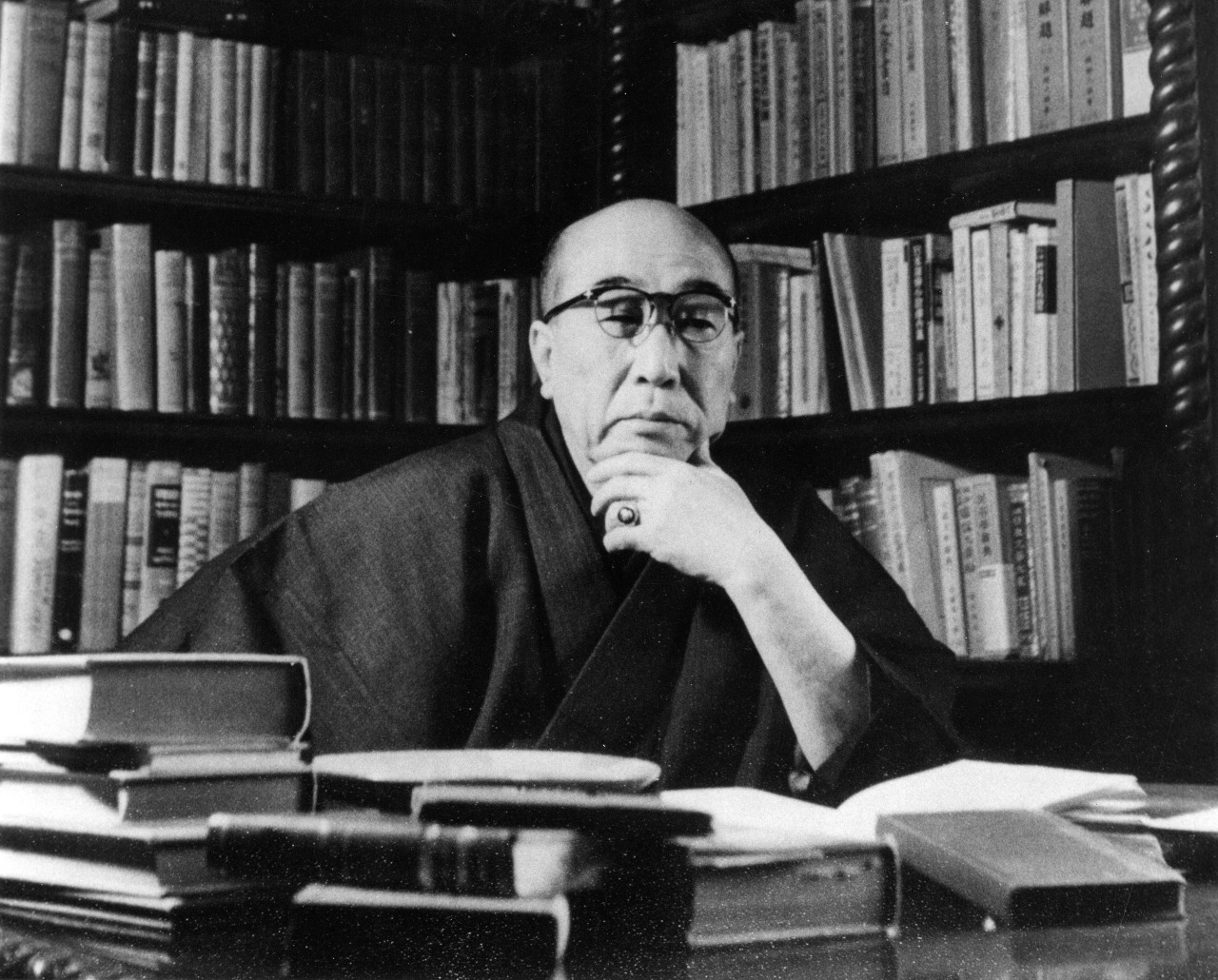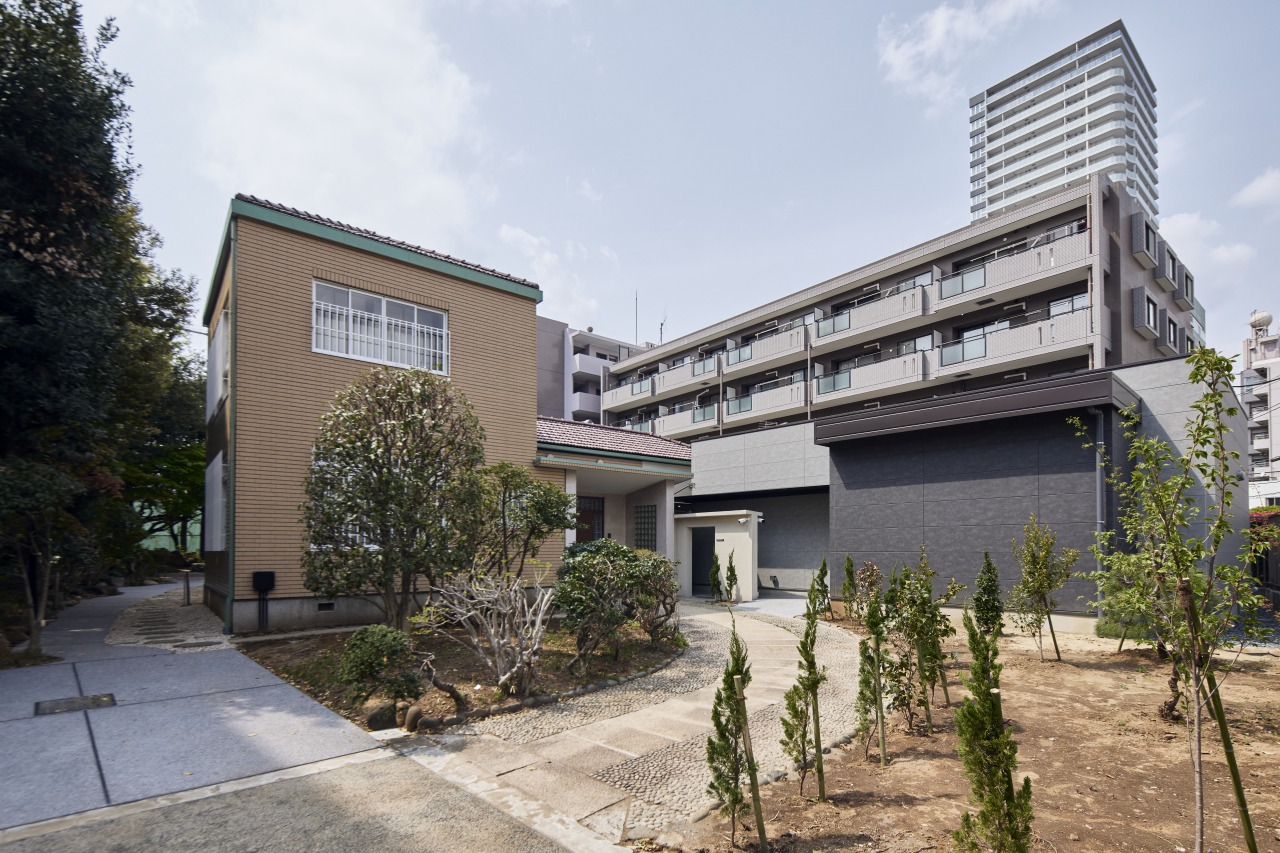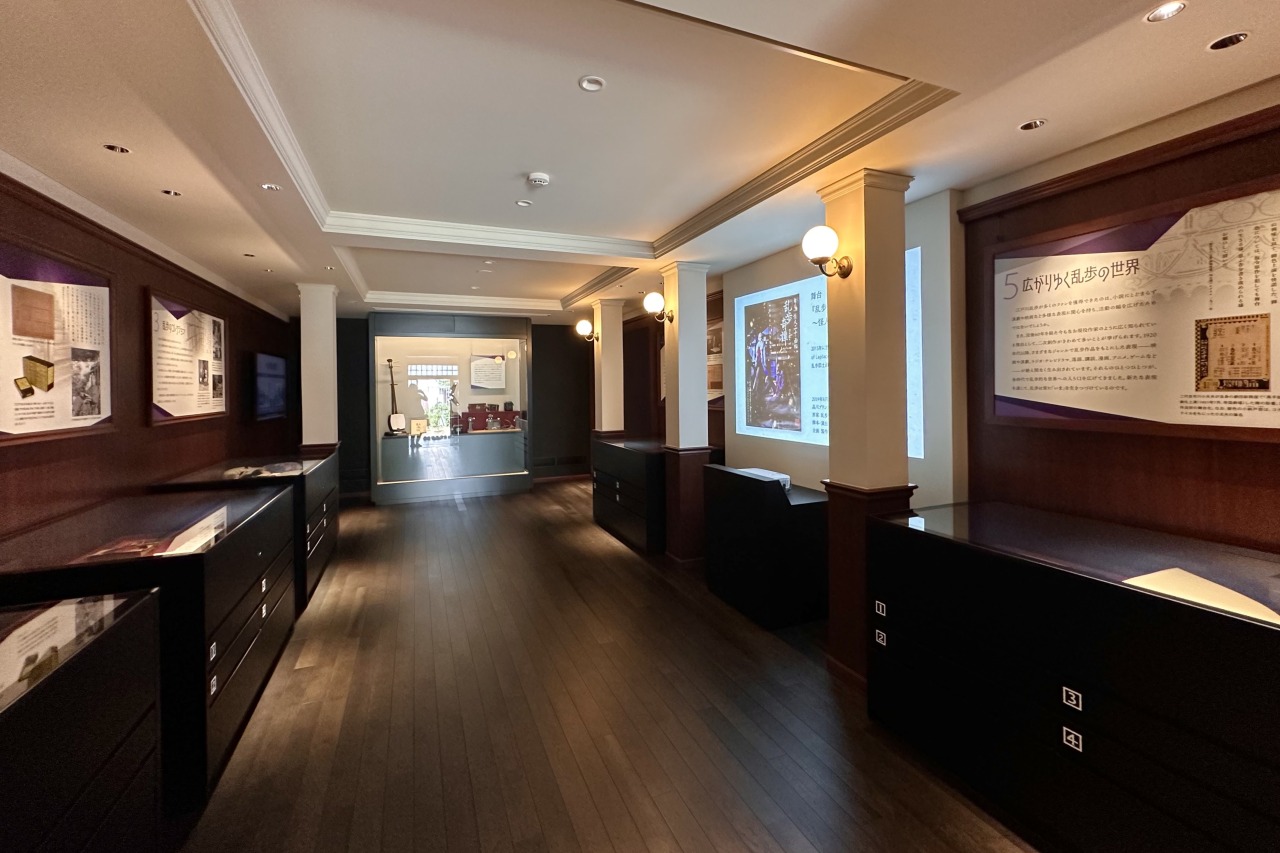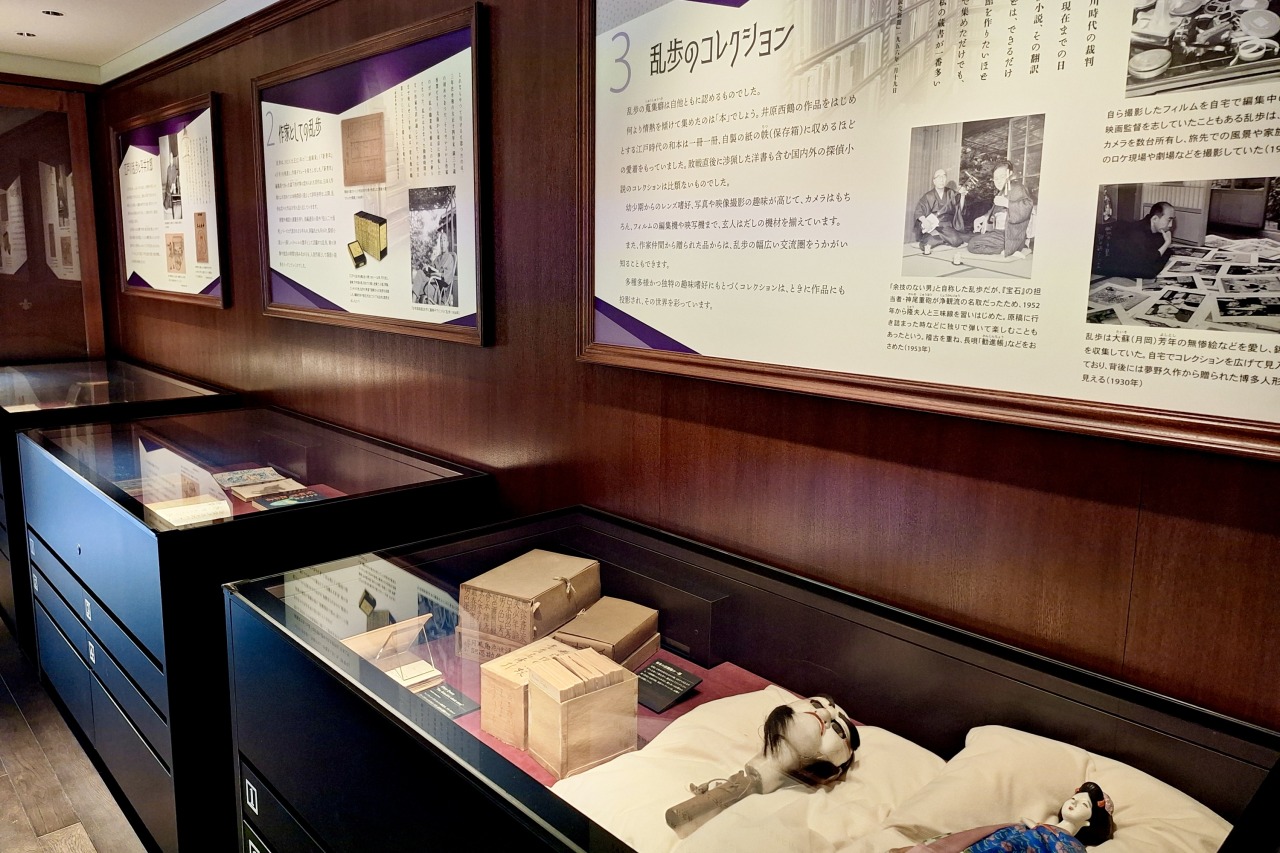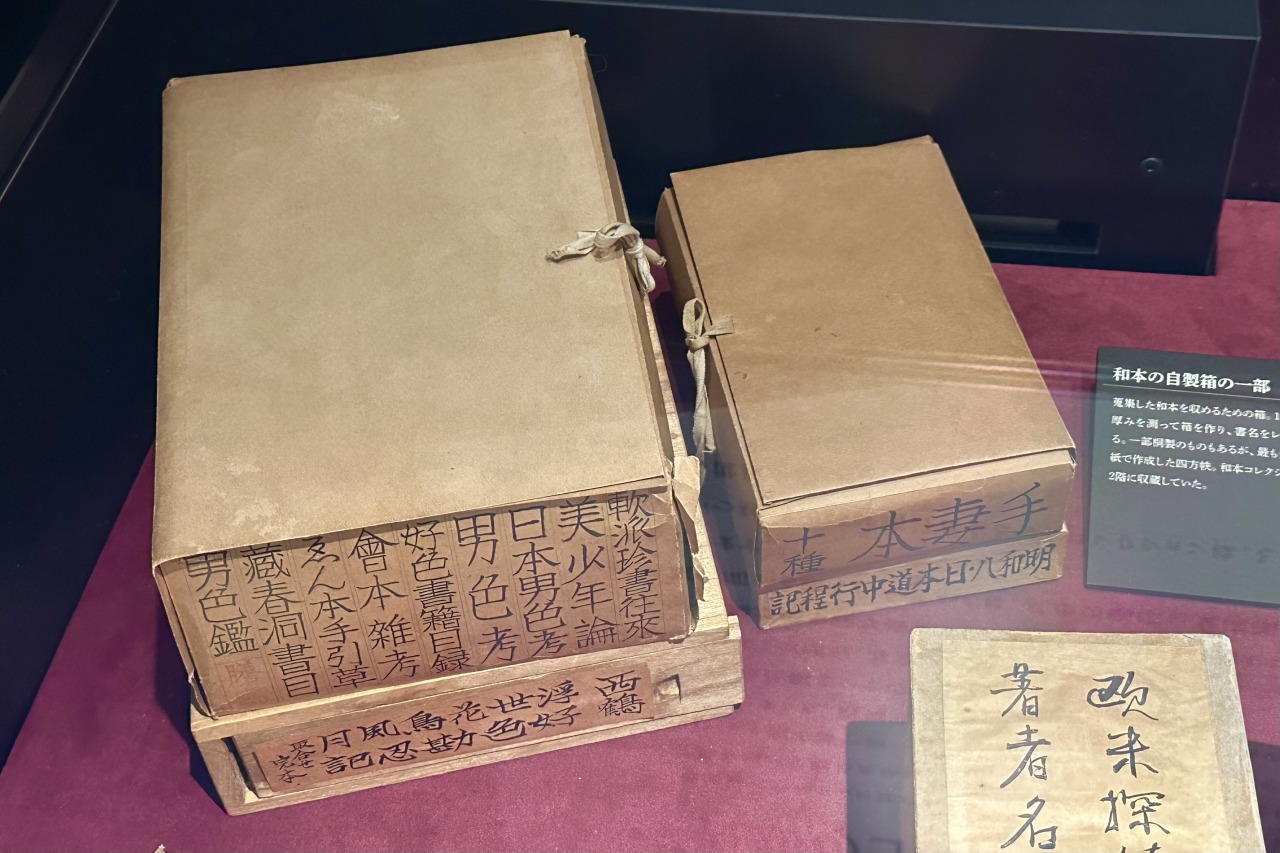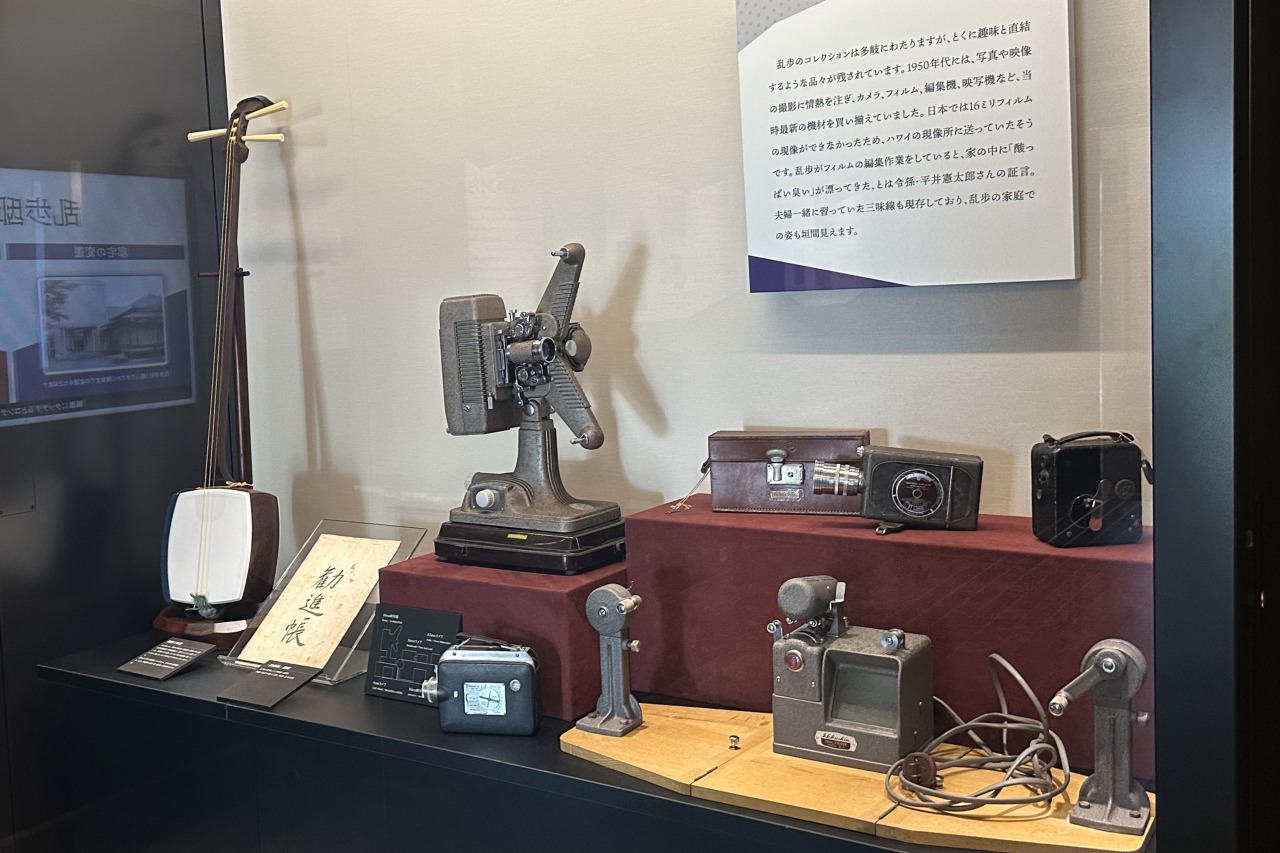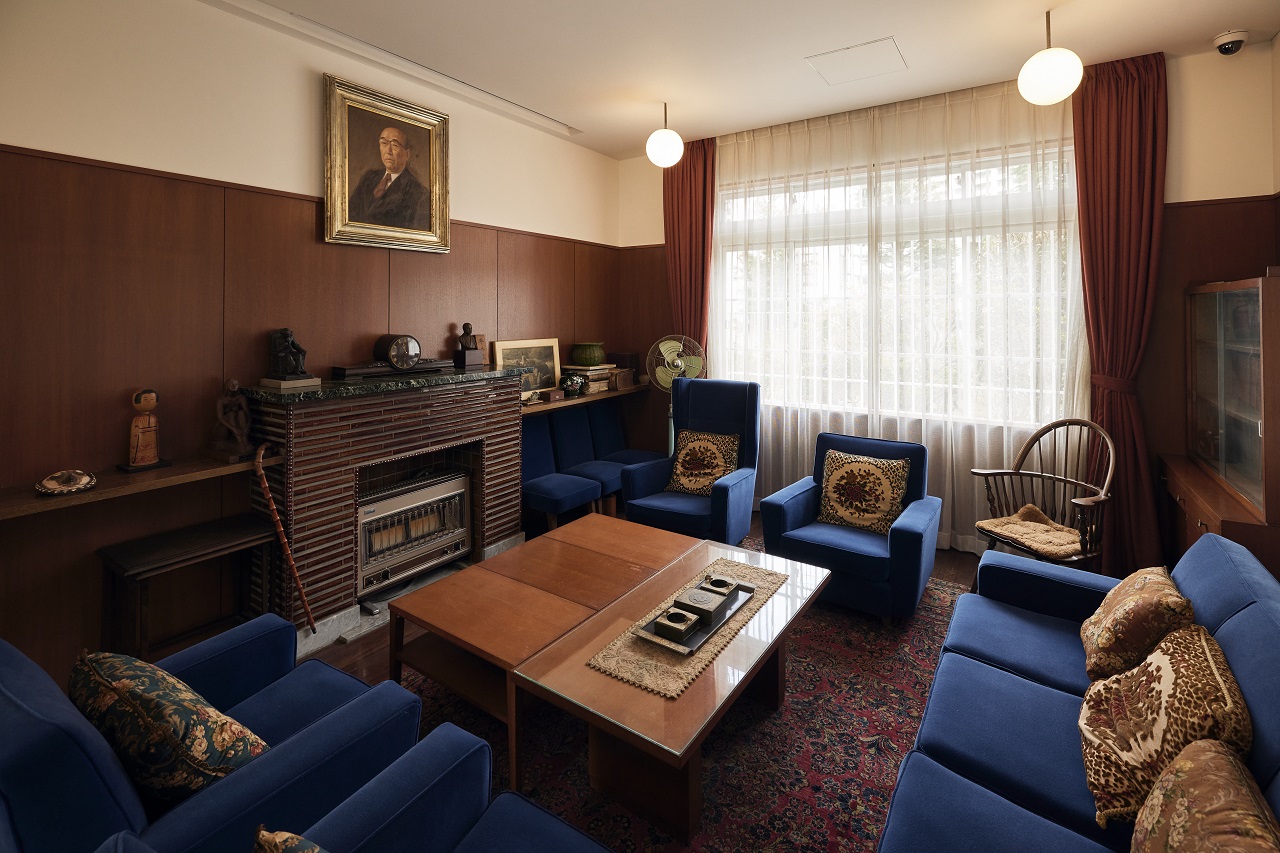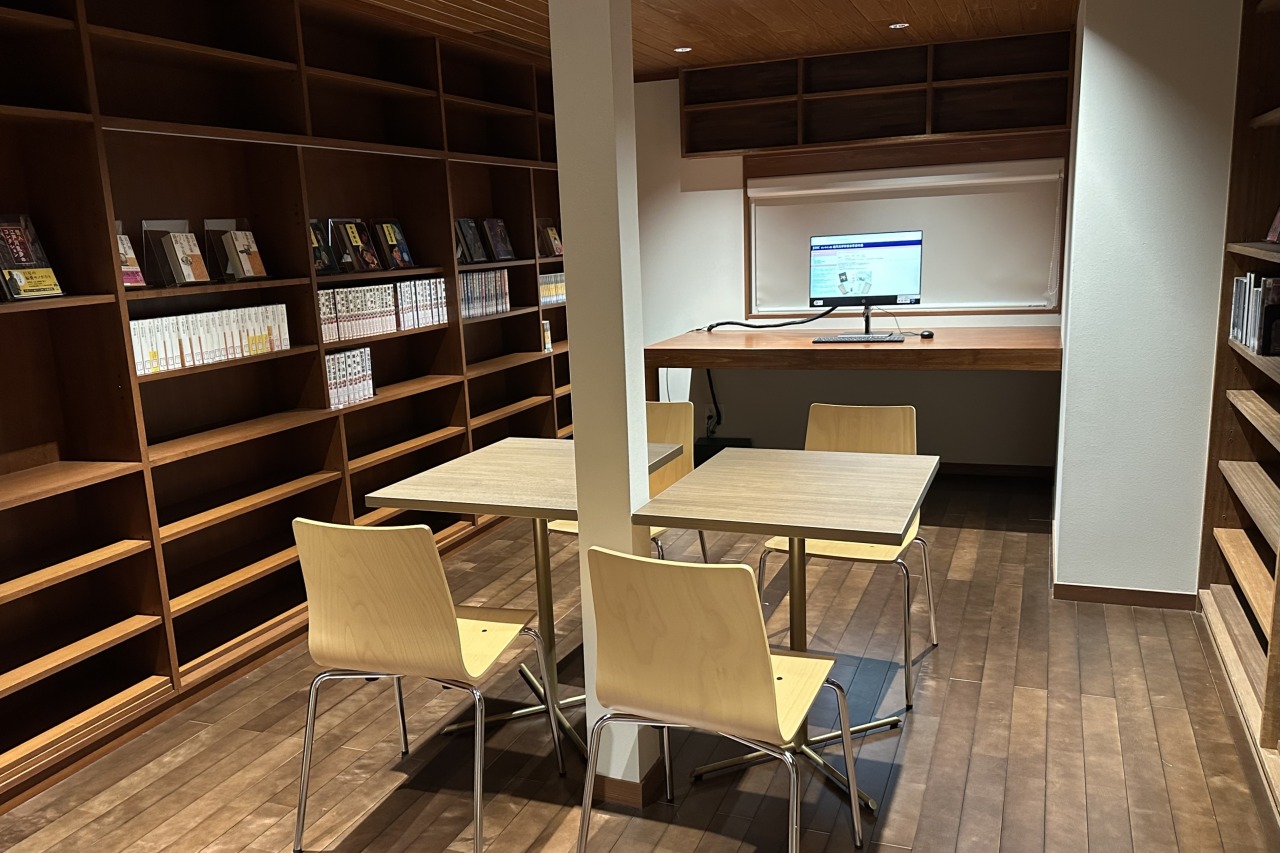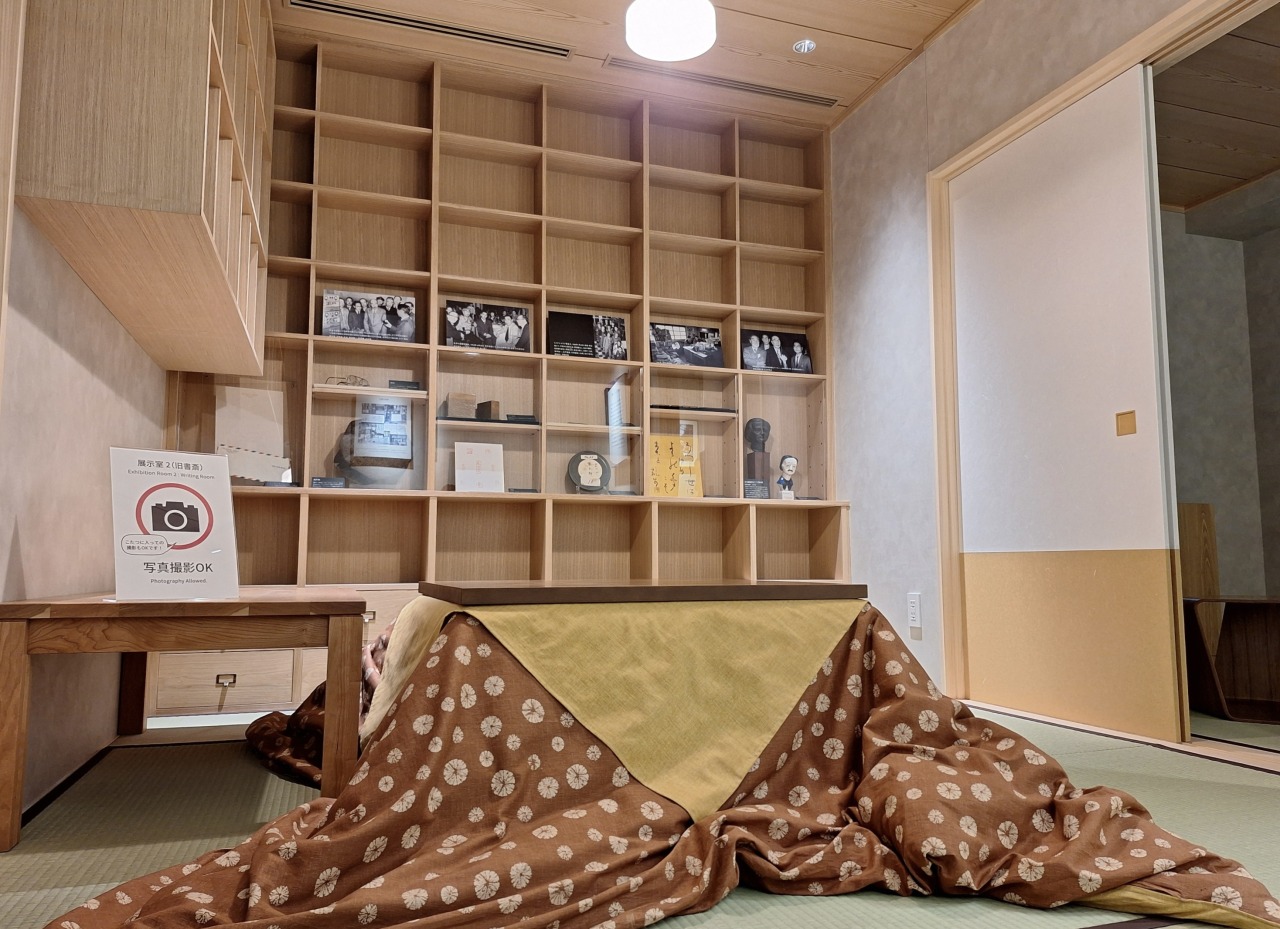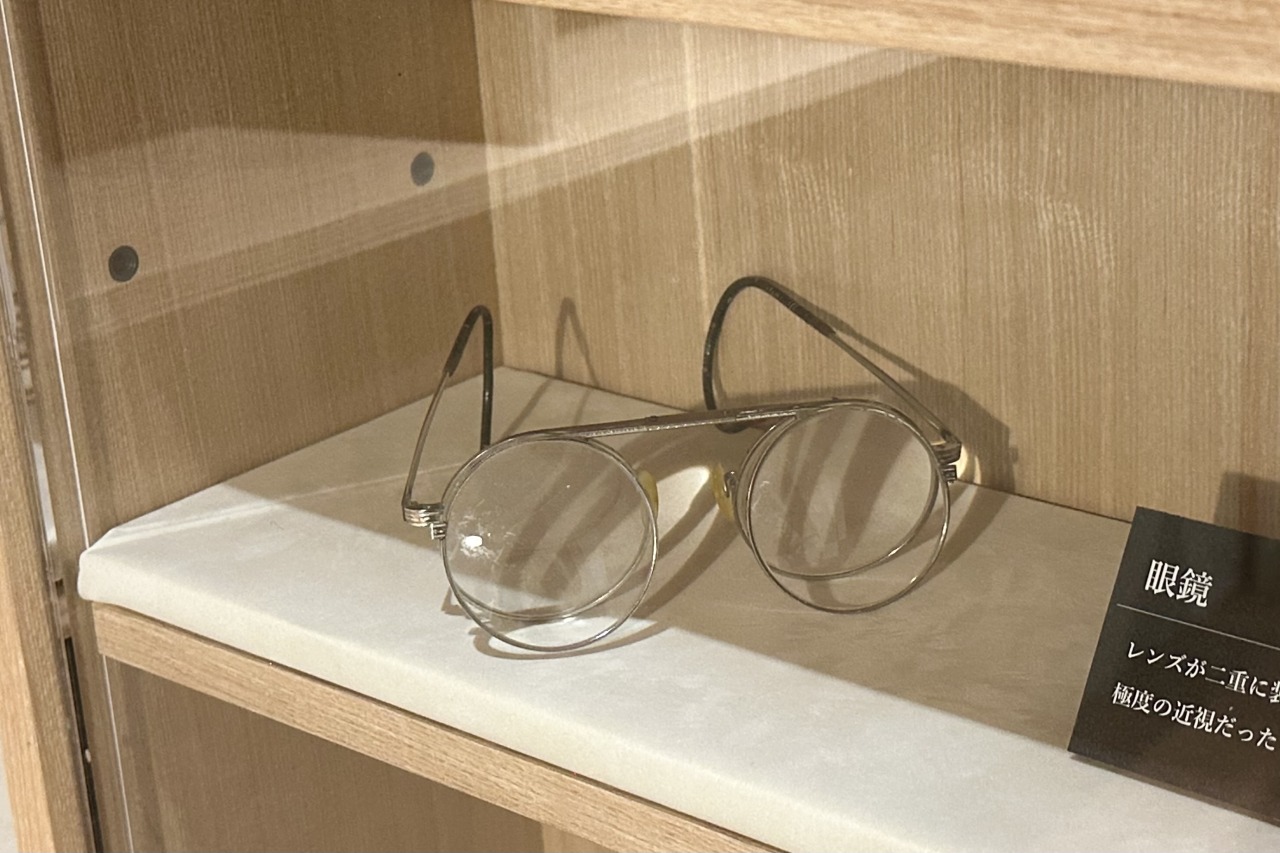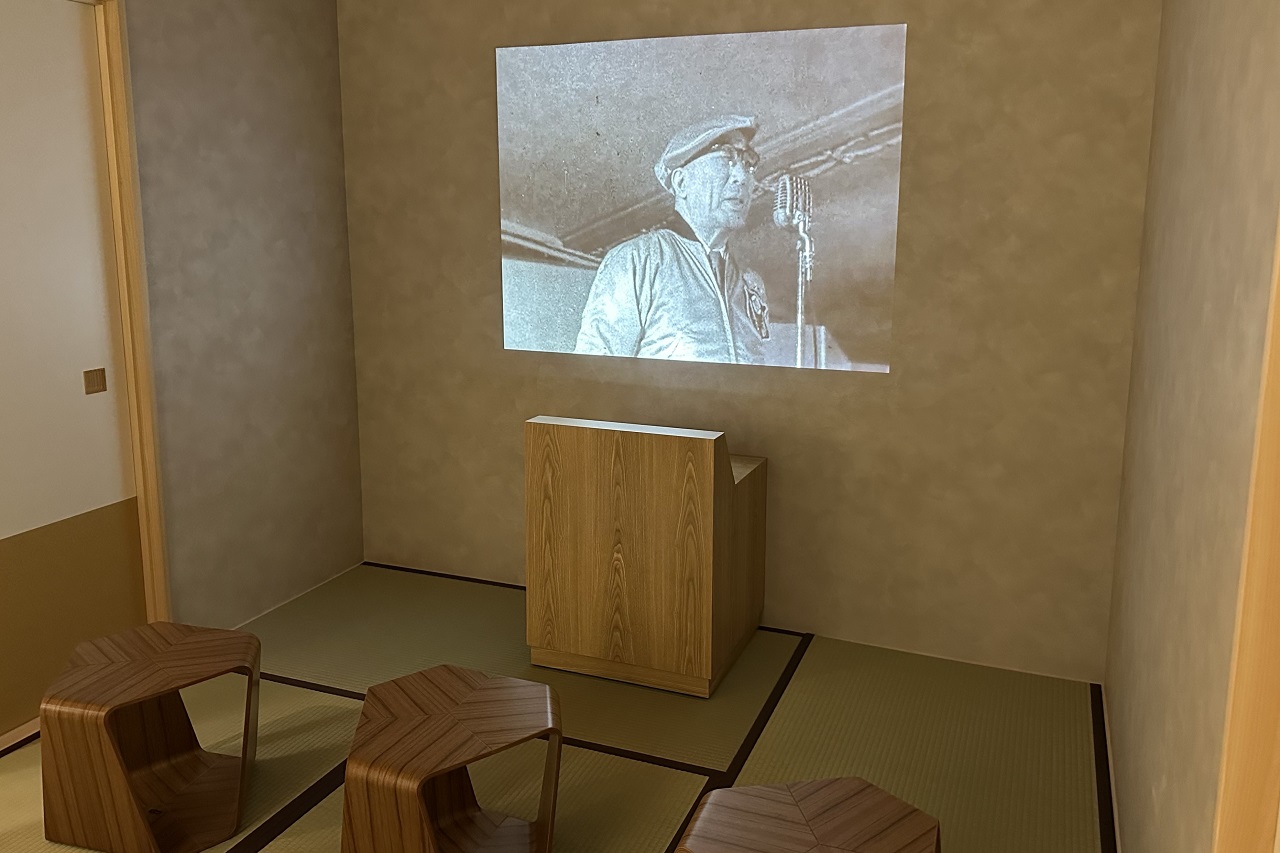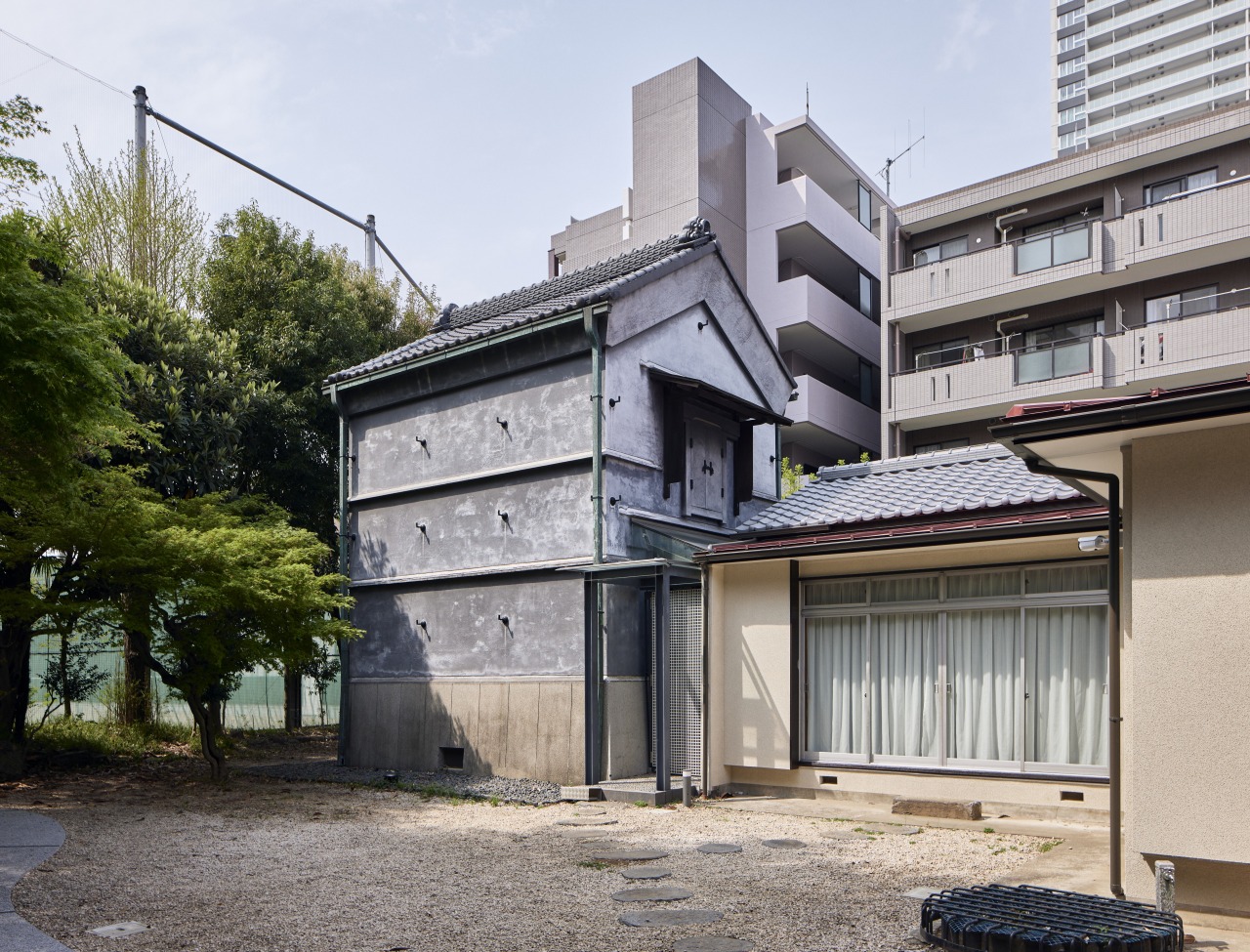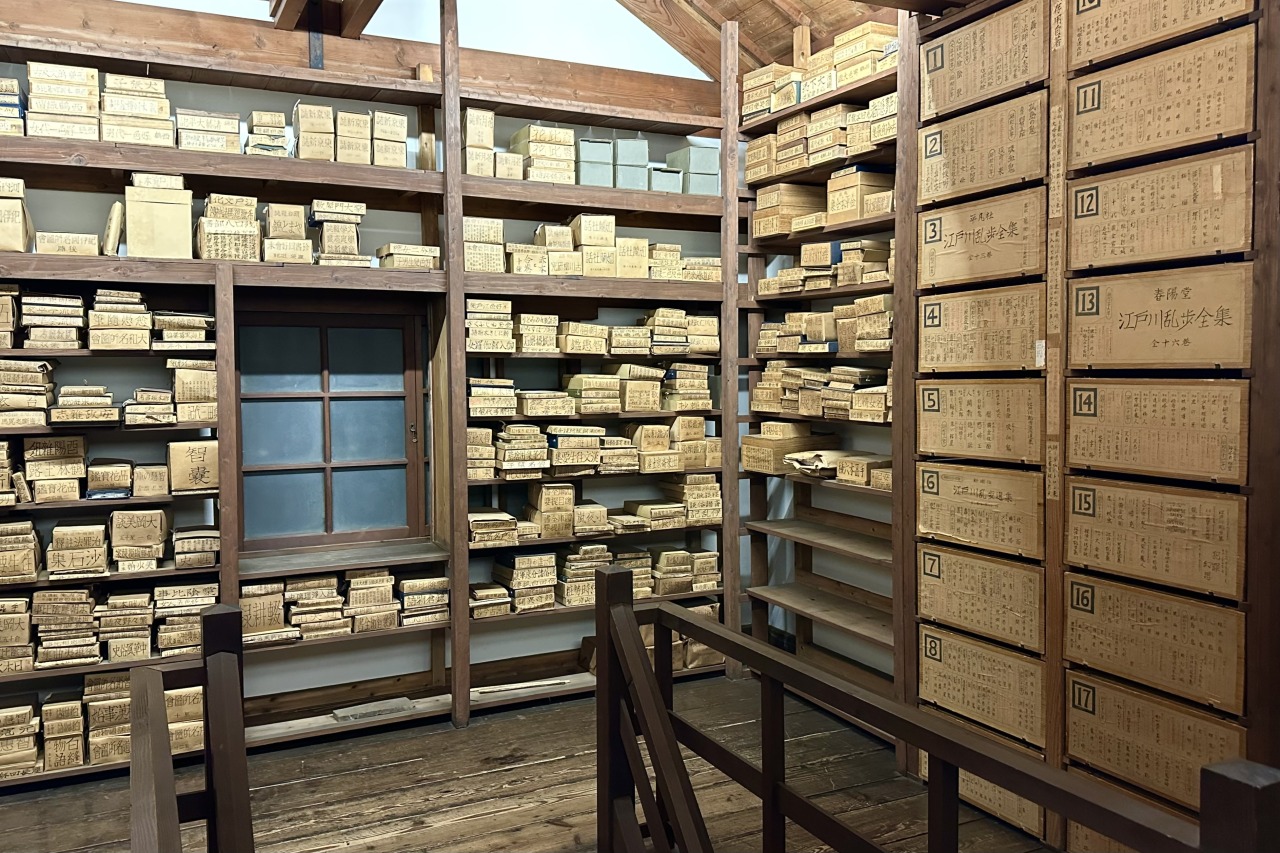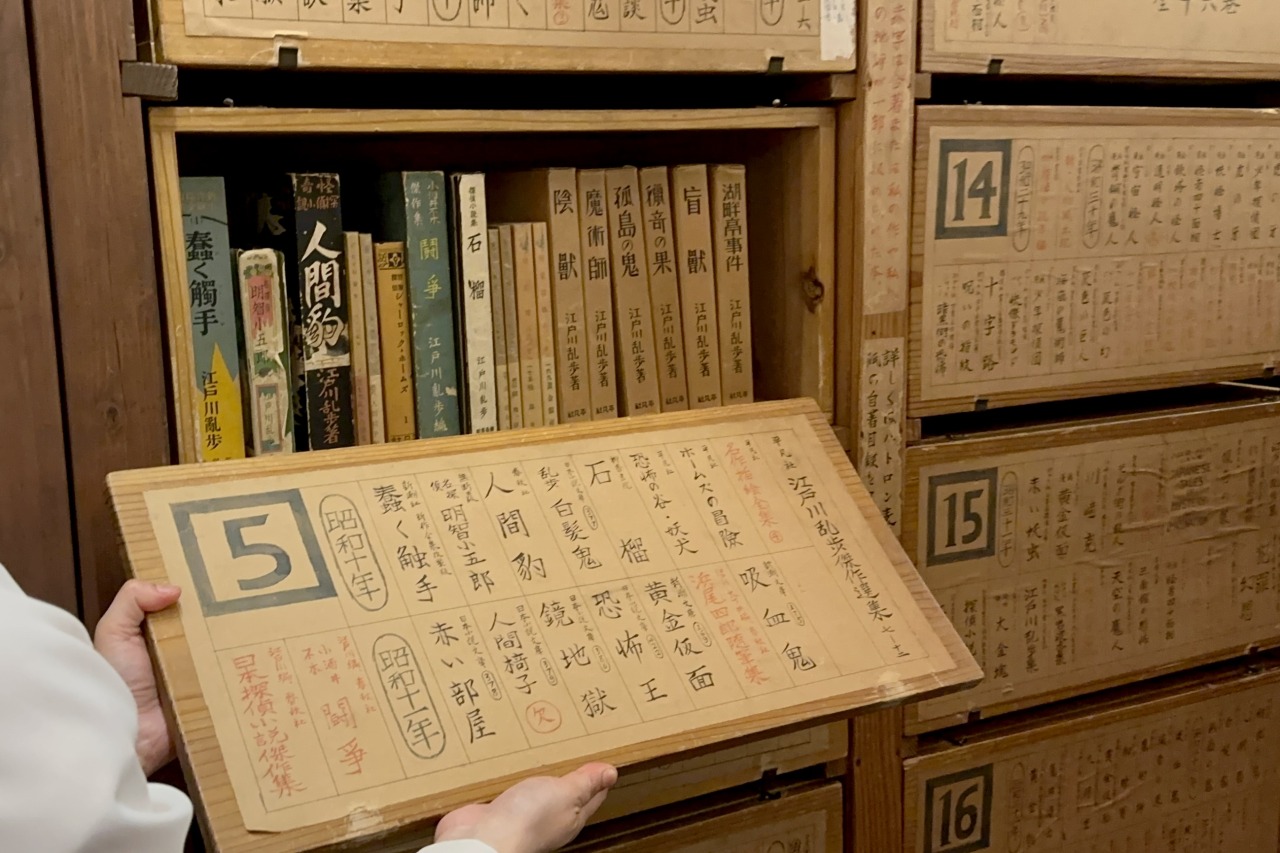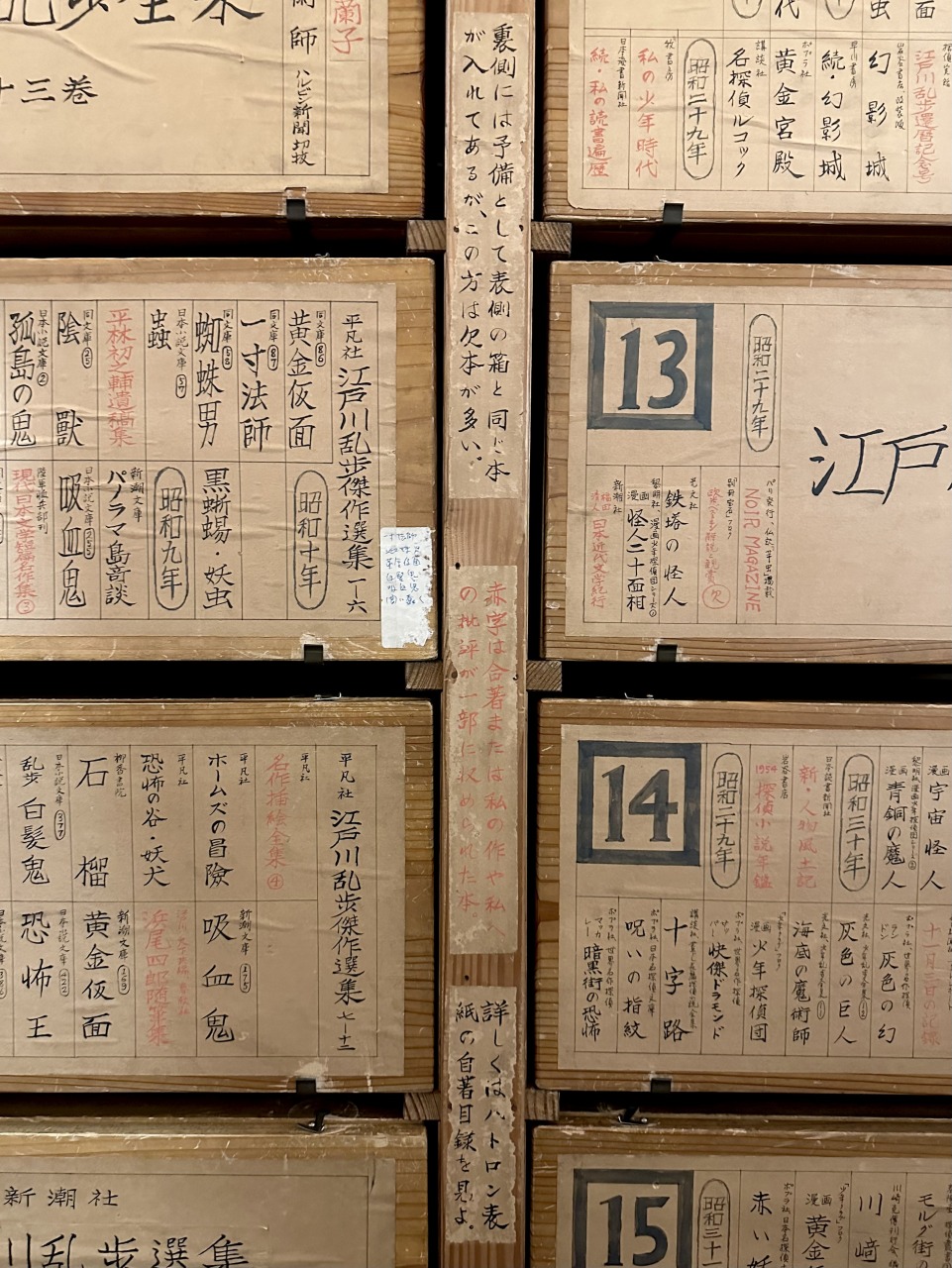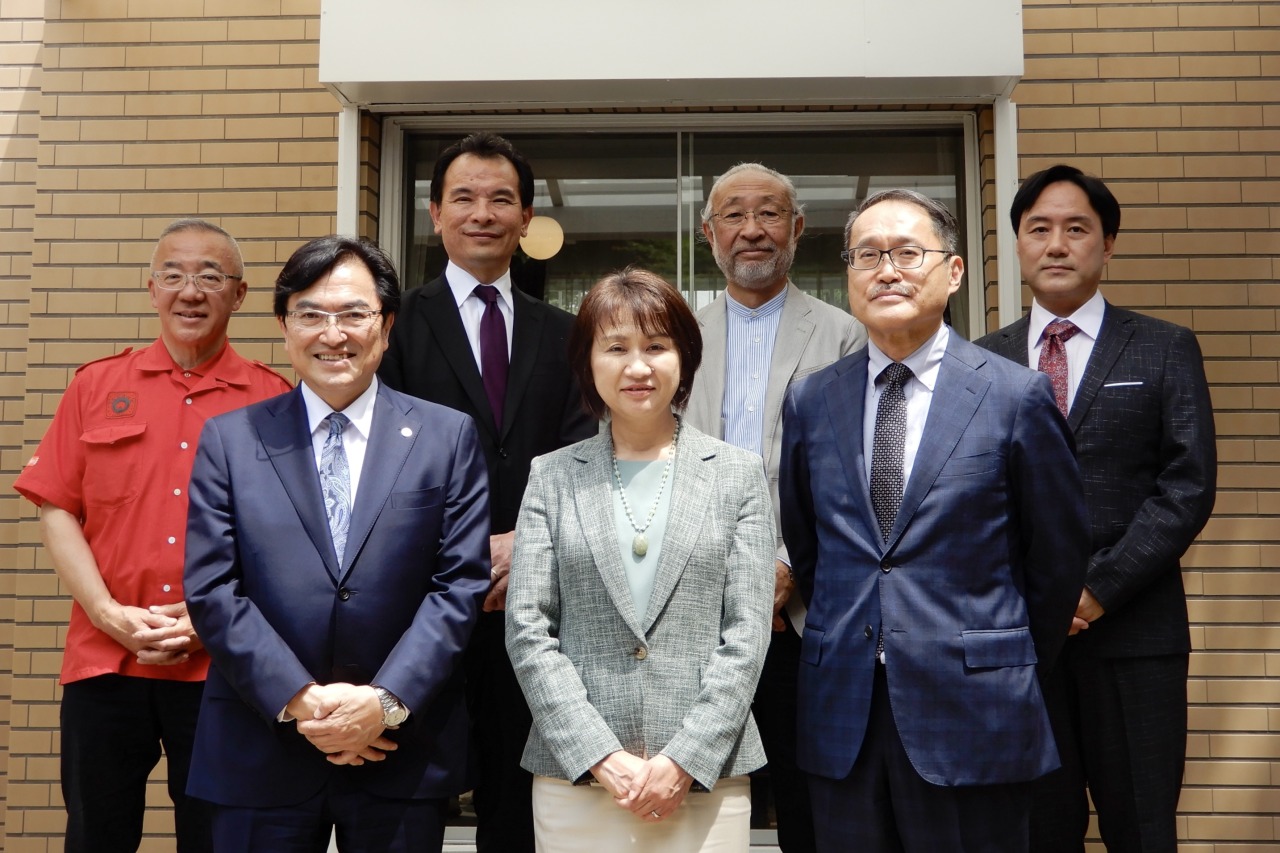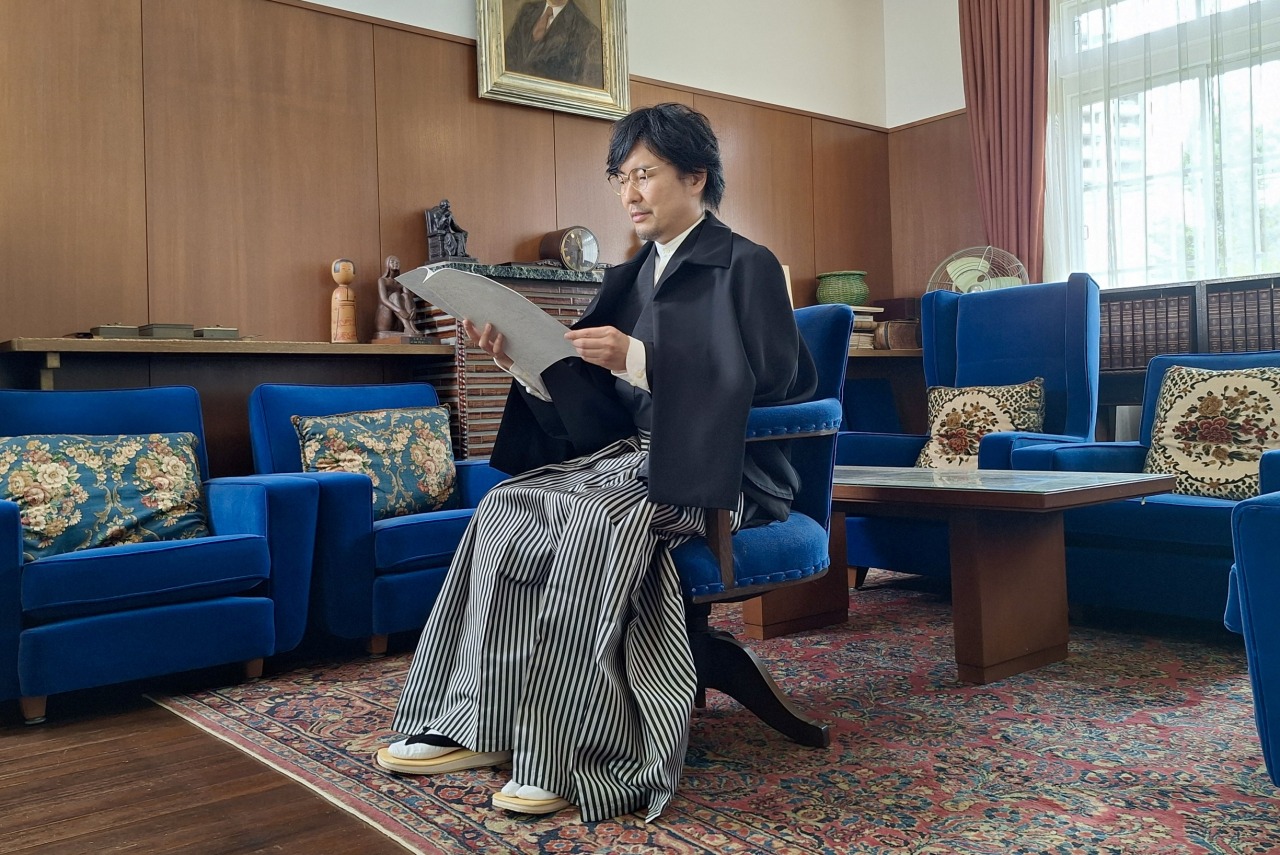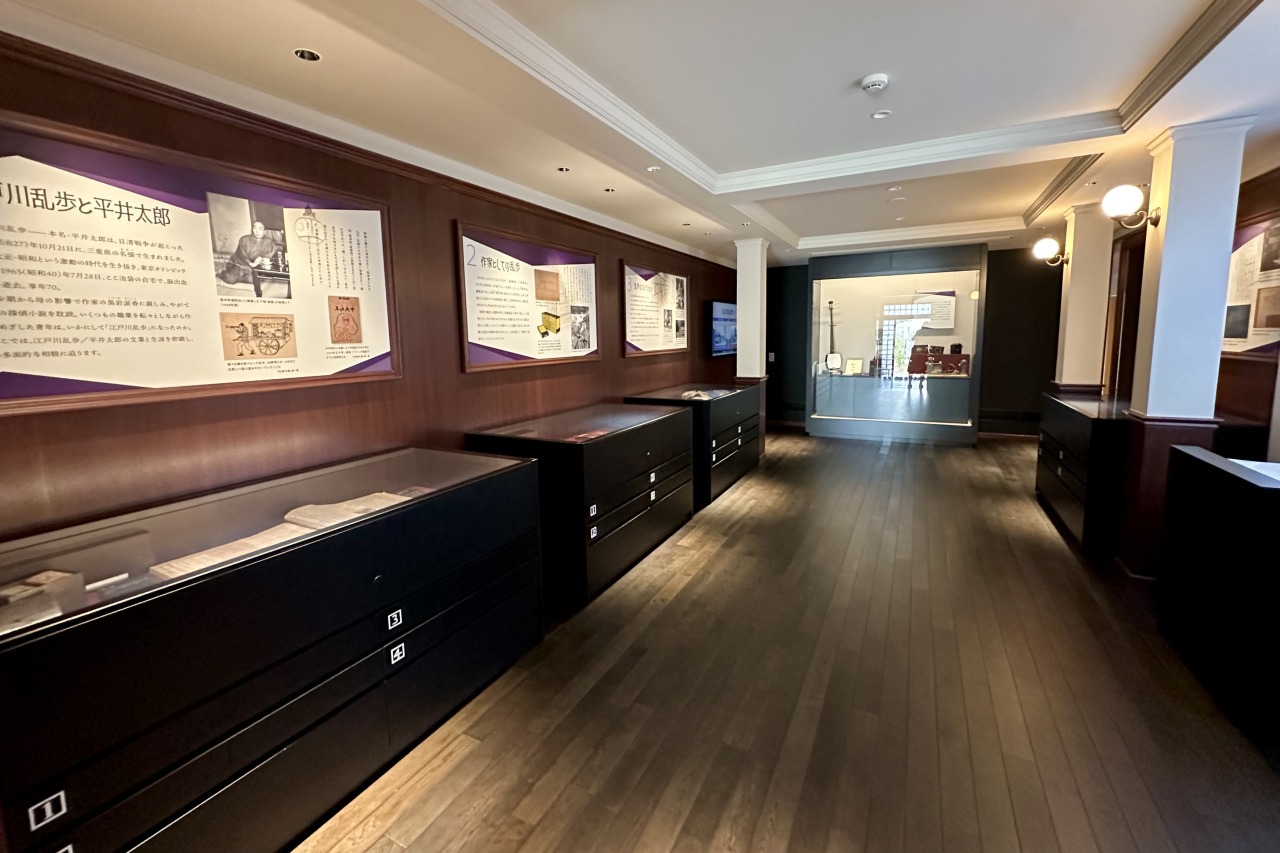
Edogawa Ranpo (1894-1965), a pioneer of Japanese mystery and horror novels, created many famous characters, including the famous detective Akechi Kogoro and the Phantom Thief Twenty Faces. The former Edogawa Ranpo House , where Ranpo spent the latter half of his life, still exists in Ikebukuro, Toshima Ward, and was renovated and reopened on May 19, 2025.
A preview event for the media was recently held, so we would like to share with you what the inside of the mansion looks like.
The former Edogawa Ranpo residence, where the ever-moving Ranpo lived until his final days
According to his personal records, Edogawa Rampo (real name Hirai Taro) moved 46 times in his lifetime. Rampo, who was known as a "moving maniac," loved the former Edogawa Rampo House (hereafter referred to as the Ranpo House), located on the north side of Rikkyo University's Ikebukuro campus, and settled there for over 30 years, from 1934 until his death in 1965 at the age of 70. Many of his famous works, including his signature works "Black Lizard" and the "Boy Detectives Club" series, were written here.
After Ranpo's death, the property was managed by his family, but in 2002 the mansion, the storehouse that was used as a library, and a collection of over 20,000 books, manuscripts, and other materials were transferred to Rikkyo University.
The Edogawa Rampo Memorial Center for Popular Culture Research was established in 2006. Since then, it has undertaken a variety of activities to become a hub for popular culture research both in Japan and abroad, including organizing and preserving materials related to Rampo and opening up related materials, including buildings, to the public.
This renovation was carried out in 2024 as part of Rikkyo Gakuin's 150th anniversary celebrations in response to the building's critical deterioration due to aging.
The Ranpo residence was originally a rented house with a main building built in 1921 and an additional storehouse added in 1924 after the Great Kanto Earthquake with the latest earthquake-resistant reinforcement. After Ranpo moved in and became the owner in 1948, the house underwent numerous renovations and additions, including the addition of a two-story Western-style building, and the interior structure became increasingly complex. As a result, it took longer than expected just to ensure the safety and durability of the building materials, which had been damaged by water leaks and termite damage.
As a result, after more than a year of work, the large-scale renovation of the main house and the Western-style building has now been completed. Initially, there were plans for a grander renovation, such as covering the entire storehouse with a building, but in the end, the original basic structure was preserved and the construction was completed in a way that emphasized the preservation of the building.
The main changes made in the renovation include the creation of an exhibition room within the mansion , and the transformation of the former study into a photo spot that recreates the space in which Ranpo lived at the time. Additionally, a new storage facility was built on the site of the demolished annex to preserve the old collection of materials. (The storage facility is not open to the public.)
Exhibition room 1
The room directly in front of you as you enter through the entrance is the newly opened Exhibition Room 1. Two Western-style rooms and a storeroom have been connected to form one exhibition room, and its classical interior, with its predominant colors of black and crimson, is reminiscent of the fantastical imagery of Ranpo's works.
The concept of the museum is "a place where the two lives of Ranpo the writer and Taro the human being come together ." In addition to the four permanent sections "Edogawa Ranpo and Hirai Taro," "Ranpo the Writer," "Ranpo Collection," and "Ranpo Living in Ikebukuro," there is also a special section where they hold themed exhibitions that change with the times, allowing visitors to get an overview of Ranpo's literary career and daily life.
The permanent corner is a must-see for fans, filled with rare items that can only be seen here, such as the draft and conceptual notes for his debut work, "Two-Sen Copper Coin," a draft for his first work, "The Murder Case on D Hill," which features the detective Akechi Kogoro, a scrapbook called "Harimaze Nenpu," in which he organizes and records half of his life with the insanely detailed attention to detail that befits a record-freak, and "Deception Genealogy," in which he attempts to systematize the tricks used in mystery works.
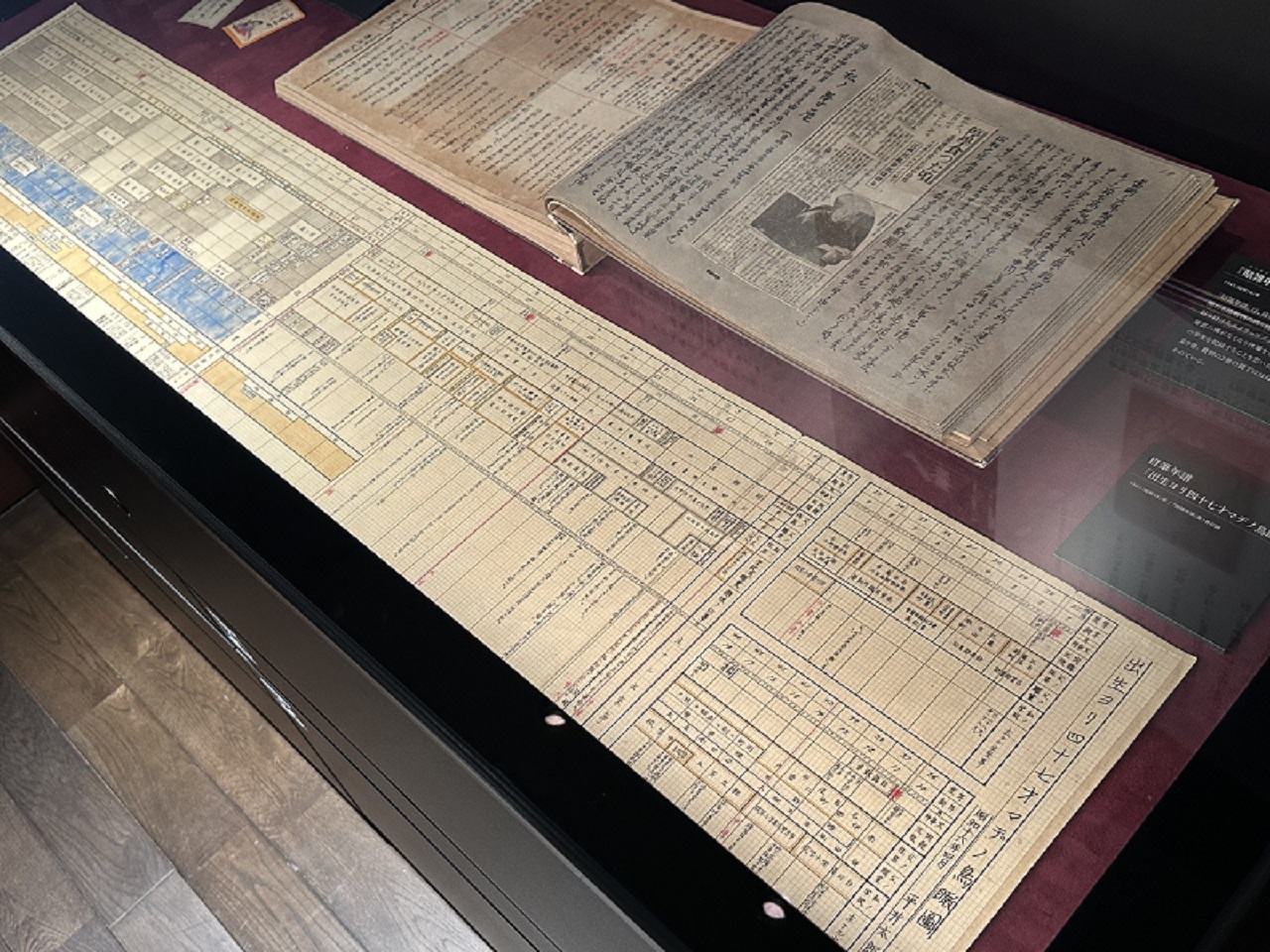
"Miscellaneous Chronological Notes" Vol. 1 (reproduction), 1941 (Showa 16), etc. (The image quality has been reduced to protect the materials. If you're interested, please come and see it in person!)
Many of the exhibits, including "Miscellaneous Chronological Notes Pasted on Paper," convey Ranpo's exceptionally meticulous personality.
For example, the following photo shows a part of the box that housed Ranpo's collection of Japanese books from the Edo period, each of which was specially made by Ranpo himself, measuring the size and thickness of the book. You may be surprised at the meticulousness of the work when you notice that even the title letters were carefully lettered, with guide lines drawn with a ruler and pencil.
As per the concept, the museum is packed with materials that show not only the activities of the writer Ranpo, but also the life of Hirai Taro, a resident of Ikebukuro. He was apparently active in neighborhood association activities during the war, and items such as a neighborhood association fee allocation chart and a ledger for managing the distribution of fish and vegetables that Ranpo created suggest that he had built a strong relationship of trust with the people in his neighborhood.
In addition, some of the previously owned materials have been repaired in conjunction with this renovation. On display are items that have been restored to their former beauty, such as the shamisen, a hobby that Ranpo learned to play with his wife Takashi, a Hakata doll given to him by Yumeno Kyusaku, and a portrait of an actor by Japanese painter Tachibana Koyume, which is thought to have been painted at Ranpo's request.
In order to protect the materials, the permanent exhibits will be changed out at irregular intervals .
Akio Kaneko, director of the Edogawa Rampo Memorial Center for Popular Culture Research, said that the exhibition is "still in the process of trial and error," and added that future plans include "making efforts to show as much as possible the complete picture of Edogawa Rampo, who had many different sides to him, including Hirai Taro, who lived as a member of society in Ikebukuro, a detective novelist, and a media producer."
reception room
Next to Exhibition Room 1 is the reception room . It is on the first floor of a two-story Western-style building that Ranpo designed himself to accommodate guests dressed in Western attire. It has a high ceiling and is a comfortable space illuminated by light streaming in through large windows on three sides.
The elegant Persian carpet that Ranpo used and the stately British furniture and furnishings are still in place, just as they were before the renovation. You can feel the atmosphere of a social gathering that was once visited by fellow writers such as Yokomizo Seishi.
Library and Exhibition Room 2 (former study and former bedroom)
Further inside the house, you will come to the library , an open-shelf reading space housing Ranpo's works, related books, and books on popular culture research, and beyond that is Exhibition Room 2 .
Exhibition Room 2 is an adjoining Japanese-style room that Ranpo once used as his study and bedroom. Originally, Ranpo placed his favorite desk in the storehouse and used it as his study. However, when the situation worsened and heating equipment became unusable, he moved his work environment to the main house. He would basically settle in this Japanese-style room and write at a low table in the summer and a kotatsu in the winter.
The two rooms connected by a corridor were the former study, which was changed during the renovations carried out after Ranpo's death, but for this renovation a bookshelf was created using photographs from that time as a reference. This is a popular photo spot, where you can actually sit at the kotatsu and take a commemorative photo as if you were Ranpo writing.
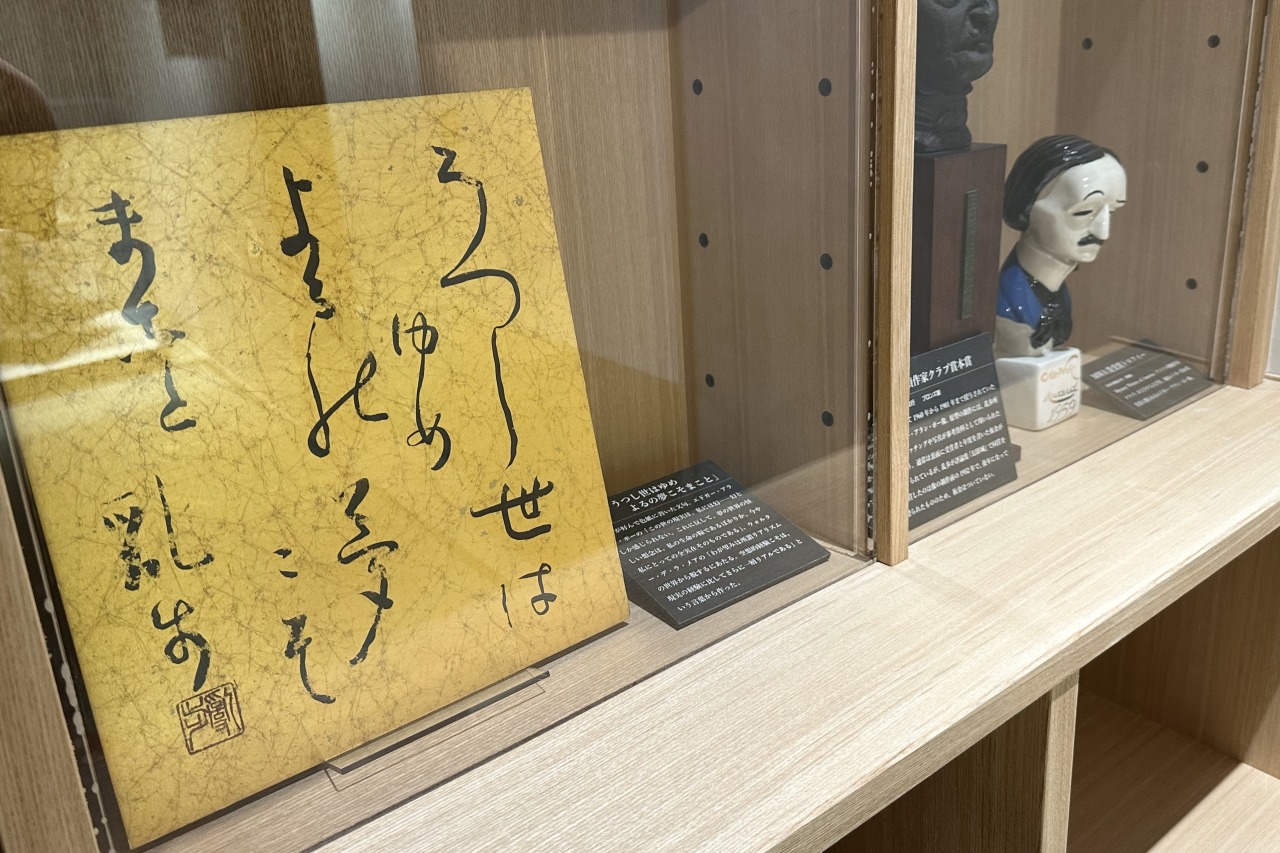
Displayed on the bookshelf is a colored paper with the phrase that Ranpo liked to use as his motto: "The world is a dream, but the night's dreams are the truth."
In his later years, Rampo poured his passion into photography and filming, acquiring the latest equipment such as 8mm cameras and projectors. In the old bedroom at the back, footage shot by Ranpo and footage of him are projected. Footage capturing Ranpo's grandson, Hirai Kentaro, entering elementary school offers a glimpse into Hirai Taro's perspective as a family man.
Storehouse (designated tangible cultural property by Toshima Ward)
The door at the end of the Ranpo residence leads to a two-story storehouse that was originally used as a study and library, and later as a full-fledged library.
The storehouse was designated a Toshima Ward tangible cultural property in 2003, and restoration work was carried out in the same year with subsidies from Toshima Ward, so it was not included in the current renovation work.
In order to maintain the condition of the interior and the documents in the archives, the general public is currently only allowed to visit the area near the entrance . However, we have been given permission for the media to take photographs, so we would like to introduce the interior for your reference.
It is said that the main reason Ranpo moved to Ikebukuro was because he liked this storehouse, which had "thick walls, small windows, and was dimly lit."
Directly in front of the entrance is a staircase leading to the second floor, and the bookshelves surrounding it are packed with Rampo's collection of books from all over the world, past and present, categorized by genre, including original Western detective novels, reference books on criminology, psychology, and medicine, philosophy books, and complete works of classical literature. This could truly be said to be the source of Rampo's knowledge.
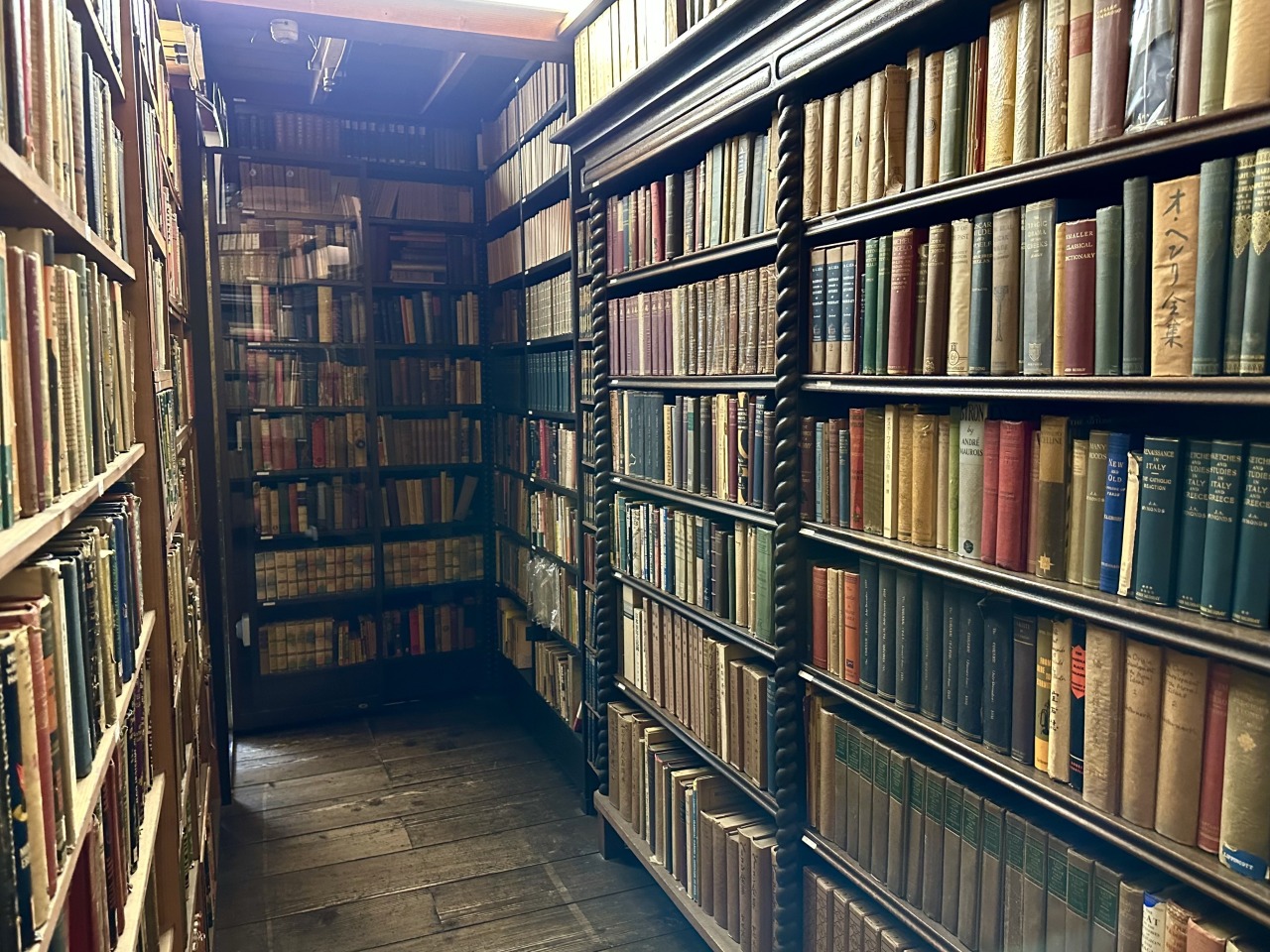
The first floor of the storehouse. The bookshelves, decorated in the English Jacobean style with spiral pillars, create a unique atmosphere that later led to the storehouse being nicknamed the "Castle of Illusions."
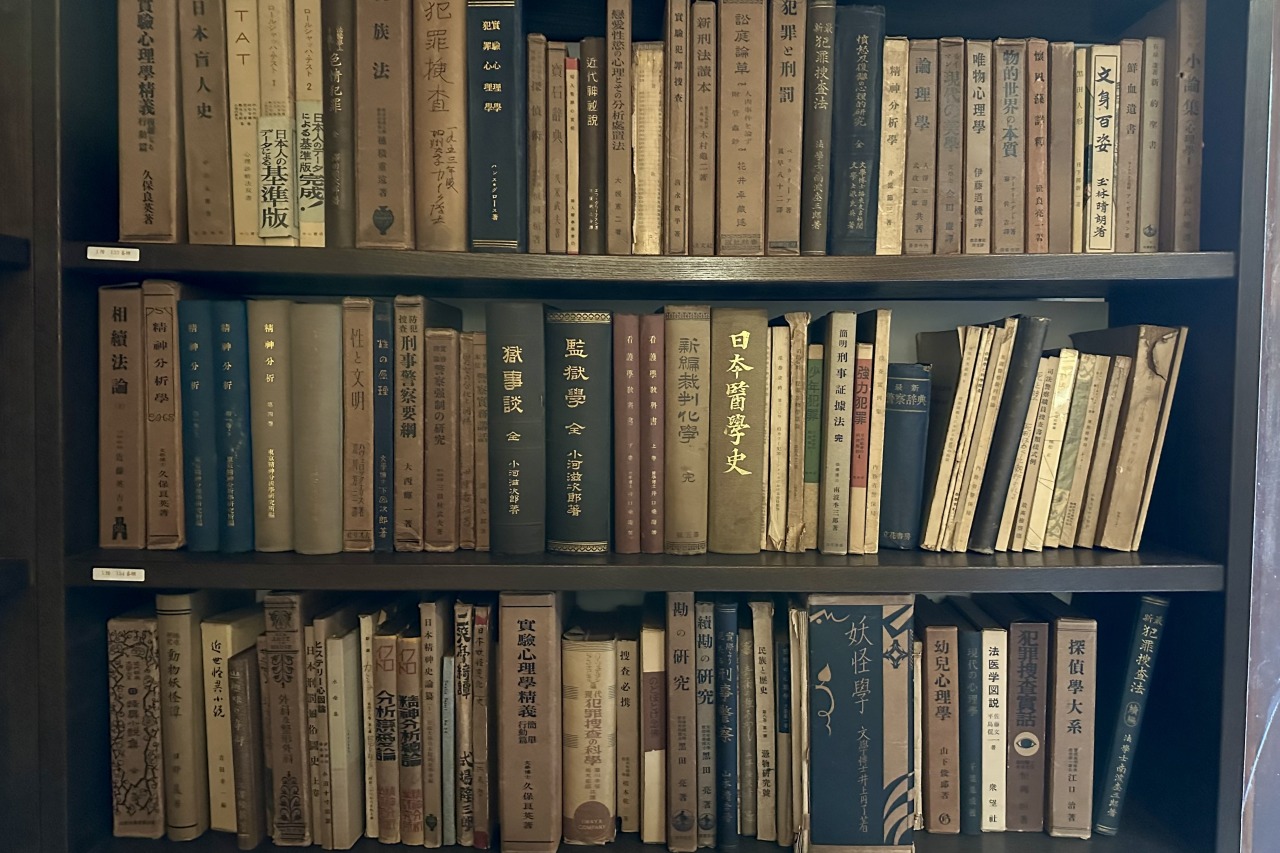
Ranpo's wide range of interests can be seen in his works, such as "Prisonology," "Monsterology," and even "Studies of Intuition."
The spines of the mystery novels have labels like those found in library collections, which show the author's initials and are, of course, the work of Ranpo, who loved to classify and organize things.
Furthermore, upon closer inspection, among the books, there is a mysterious white board with the words "Eberhart, "Stairs in the Dark," 32/5/25, Tanaka" written on it. Apparently, Ranpo opened his storehouse to fellow writers, and whenever he lent a book, he would leave a board like this with the book title and borrower's name written on it – in other words, a loan slip – as a marker. …In other words, it seems that the book has still not been returned by "Mr. Tanaka."
Going up to the second floor, you will see a row of homemade boxes containing the collection of Japanese books that were also displayed in Exhibition Room 1. On the bookshelf next to it are rows of boxes used to store Ranpo's own writings, commonly known as "autobiographical boxes."
These are original boxes designed and ordered by Ranpo, and contain the books in publication order, starting with No. 1. In fact, the boxes are arranged in two rows, front and back, with the back box apparently containing spare books. The thoroughness of the storage, which would now be considered "for display and preservation," is also characteristic of Ranpo.
In addition, notes on how to use the book box are posted on the bookshelves, making it look more like a full-fledged library than a personal library.
This consideration for others can be seen in many places, and Hirai Kentaro explains the reason for this:
"After my grandfather bought this house after the war, he put a lot of effort into popularizing mystery novels. Behind this was the painful experience he had had during the war (including being denied a venue to publish his works due to censorship), and he felt that the only way to unite as a genre was to do so, and he had a strong desire to attract many customers. It was for this reason that he repeatedly remodeled his house, and while he said he was doing it 'for the family,' looking at documents and other materials, I think he really wanted people to see it."
If we consider that the state of the storehouse was not simply a product of Ranpo's meticulous personality and collecting habits, but rather a reflection of his strong sense of purpose, perhaps our perspective on it will change.
This storehouse is an important example of a residential storehouse in the Yamanote area, which saw rapid residential development after the Great Kanto Earthquake, and is an extremely rare example of a private individual's extensive collection of books preserved in its entirety. In that sense, it is a spot with many things to see.
At the press conference, a reading of the play "Ghost" by voice actor Hiroyuki Yoshino was also screened.
The press conference for the reopening, held on the same day as the media preview, was attended by Rikkyo University President Renta Nishihara, Edogawa Ranpo Memorial Center for Popular Culture Research Director Akio Kaneko and other Rikkyo University officials who manage the Ranpo House, as well as Toshima Ward Mayor Miyuki Takagiwa and Kentaro Hirai, and officials from the mystery event "Toshima Ranpo Festival."
President Nishihara commented , "I hope that this former residence will continue to be a richer place, passing on Ranpo's achievements to future generations and nurturing the sensibilities and imaginations of the young people who will lead the next generation."
Mayor Takagiwa said he is a big fan of Ranpo and spoke of his vision for the area, saying, "Toshima Ward is currently working on various plans for the future 10 years from now, and among these, culture is one of the major pillars. We would like to promote the good things about Ikebukuro to everyone, while cherishing cultural assets such as Ranpo's mansion and storehouse."
Also, to commemorate the renewal, a special reading of Ranpo's short story "Ghost" was performed in the reception room at the press conference. The play was planned and produced by Nosaka Lab Co., Ltd., headed by director Nosaka Minoru.
Popular voice actor Hiroyuki Yoshino appeared in the reading performance dressed as a student. The approximately 20-minute performance was an adaptation of the original work, and with background music perfectly suited to the work's mysterious atmosphere, Yoshino brilliantly portrayed a variety of roles, immersing the audience in the world of the work.
Although the story is mostly narrative and there aren't many lines, Yoshino's acting is so skillful that it's easy to imagine the characters' expressions. We watched the reading from outside, and even though it was a warm day with strong sunlight, we felt a chill in our bodies… The video of the reading performance will be available for a limited time until June 30, 2025 on Rikkyo University's official YouTube channel , so be sure to check it out.
Ranpo served as the first president of the Mystery Writers Club, where he fostered friendships among fellow writers, and he also established the Edogawa Rampo Prize, working hard to nurture the next generation of writers. His influence on Japanese literature today is immeasurable. The former Edogawa Rampo House, where the spirit of Ranpo still lingers, has been given a new lease of life. If you're a mystery fan, why not take a visit?
Overview of the Former Edogawa Rampo Residence (Rikkyo University Edogawa Rampo Memorial Center for Popular Culture Research)
| address | 3-34-1 Nishi-Ikebukuro, Toshima-ku, Tokyo |
| Opening days | Mondays, Wednesdays, and Fridays (closed on public holidays) |
| Regular Opening Hours | 10:30am – 4:00pm |
| Admission fee | Free (no reservation required) |
| Official page | https://www.rikkyo.ac.jp/research/institute/rampo/ |
| Precautions | Opening hours may be subject to change, so please check the official website for the latest information and details. |
*The information listed is current as of the time of coverage. It may differ from the latest information, so please check the official website for details.
<Past coverage reports>
[Report] "Sylvanian Families 40th Exhibition" held at Ikebukuro Sunshine City! Don't miss the large diorama recreating Sylvanian Village and the corner with over 100 kinds of babies!
Click here for a list of interview reports

